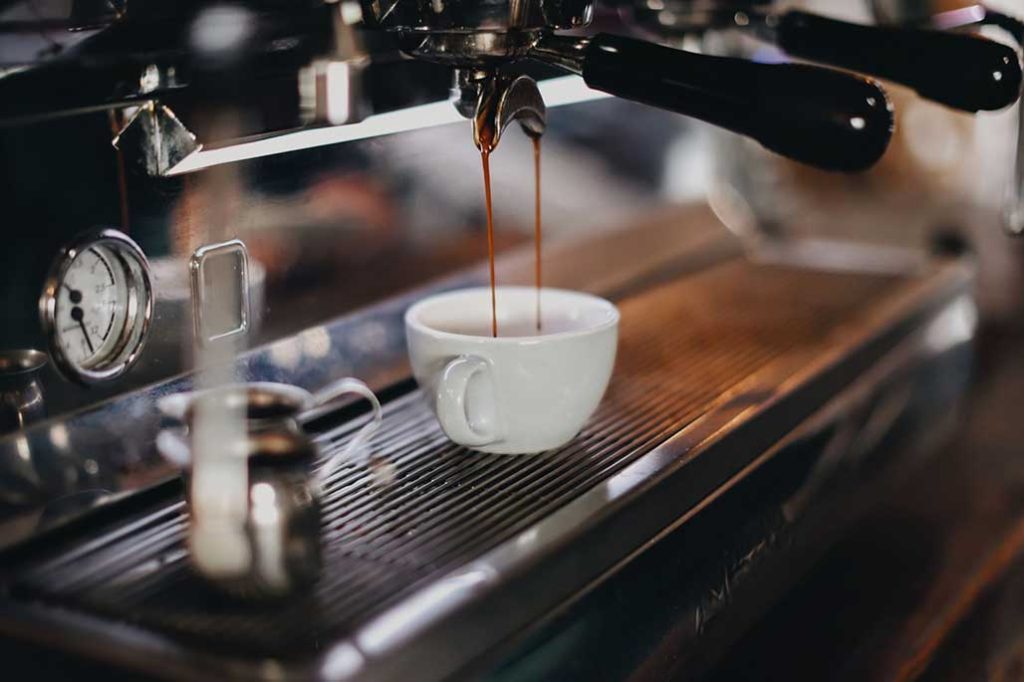Blog
The Perfect Espresso – Tips for Making It at Home
Espresso is the foundation of many beloved coffee drinks, from lattes and cappuccinos to Americanos and macchiatos. Whether you’re a coffee connoisseur or just starting to explore the world of espresso, making the perfect shot at home can seem like an art form. But with the right equipment, technique, and a little practice, you can brew café-quality espresso right in your kitchen. Here’s your ultimate guide to making the perfect espresso at home.
1. Understanding Espresso
Before diving into the steps for brewing the perfect espresso, it’s important to understand what espresso is and what makes it different from other types of coffee. Espresso is a concentrated form of coffee made by forcing hot water under pressure through finely-ground coffee beans. The result is a small, intense shot of coffee with a rich, creamy texture and a layer of golden crema on top.

2. Essential Equipment for Brewing Espresso
To make a great espresso at home, you’ll need a few key pieces of equipment:
- Espresso Machine: The most important tool for brewing espresso is, of course, an espresso machine. You can choose between automatic, semi-automatic, or manual machines, depending on your preference and level of experience. Semi-automatic machines give you more control over the brewing process and are ideal for home use.
- Coffee Grinder: A burr grinder is essential for achieving a consistent grind size. Espresso requires a fine grind, and burr grinders allow you to adjust the coarseness with precision, ensuring you get the right consistency for a perfect shot.
- Tamper: A tamper is used to compress the ground coffee in the portafilter, creating a uniform surface. Consistent tamping ensures even extraction and prevents channeling (when water flows unevenly through the coffee).
- Scale: While not absolutely necessary, a digital scale can help you measure the right amount of coffee and water, which is especially useful for beginners.
- Fresh, High-Quality Beans: Freshly roasted beans are essential for making a great espresso. Look for beans specifically labeled for espresso or choose a medium to dark roast with a good balance of acidity and sweetness.

3. Choosing the Right Coffee Beans
The foundation of a great espresso shot is the coffee beans. Here are some tips for selecting the right beans:
- Freshness is Key: Espresso is best made with freshly roasted beans. Look for beans that have been roasted within the past two weeks for the best flavor.
- Single-Origin vs. Blends: While single-origin beans highlight the unique characteristics of a specific region, espresso blends are formulated to create a balanced flavor profile with consistent results. Experiment with both to find what you prefer.
- Roast Level: Espresso is typically made with medium to dark roasts, as these beans tend to have richer, fuller flavors that hold up well under high pressure. Lighter roasts can be used for espresso, but they may produce a more acidic shot.
4. Grind Size – The Secret to Extraction
Grind size is one of the most critical factors in making espresso. For espresso, you’ll need a fine grind, but not too fine that it becomes powdery. The grind size should resemble table salt – fine enough to create resistance when the water is forced through the coffee but not so fine that it clogs the machine.
- Consistent Grind: A burr grinder is preferred over a blade grinder for espresso, as it produces a more consistent grind size, which is essential for even extraction.
- Adjusting Grind Size: If your espresso is too bitter, it might be over-extracted, which means the grind is too fine. On the other hand, if it’s too weak or sour, your grind might be too coarse, and the water is passing through too quickly.
5. Proper Dose of Coffee
The right amount of coffee grounds is essential for a well-balanced shot. A standard espresso shot typically uses around 18-20 grams of ground coffee for a double shot, though this can vary depending on the size of your portafilter and personal taste preferences.
- Weighing Your Coffee: Use a digital scale to measure the coffee grounds accurately. This ensures you are using the correct amount of coffee and helps you maintain consistency with each shot.
- Distribute Evenly: Once the coffee is added to the portafilter, gently tap it to level out the grounds. This ensures that the water will flow evenly through the coffee, avoiding any “channeling” where water flows too quickly through certain areas.
6. Tamping – Compressing the Grounds
Tamping is the process of pressing the ground coffee evenly into the portafilter. A good tamp ensures that the coffee is compact and uniform, allowing for even extraction.
- Even Pressure: Apply even pressure when tamping. Aim for about 30 pounds of force, but more important than the exact pressure is consistency. A level tamp ensures that water flows evenly through the coffee, which is key to a good shot.
- No Tamping Marks: Ensure that the edge of the portafilter is clean and free from any coffee grounds. This helps prevent clogs and ensures proper extraction.
7. Brewing Temperature and Pressure
Espresso is brewed under pressure, and the water temperature must be precise to extract the perfect flavors from the coffee.
- Water Temperature: The ideal brewing temperature is between 190-200°F (88-93°C). If your espresso machine doesn’t have a temperature control, let it heat up for a few minutes before brewing.
- Pressure: Most espresso machines operate at 9 bars of pressure, which is essential for extracting the full range of flavors from the coffee. Ensure your machine is properly calibrated for optimal pressure.
8. Brewing Time
The time it takes to brew your espresso shot can influence the flavor. A typical shot should take about 25-30 seconds to extract. If it’s too fast, the coffee may taste under-extracted (weak and sour); if it’s too slow, it may taste over-extracted (bitter and harsh).
- Adjusting Extraction: If your espresso is extracted too quickly, try a finer grind. If it takes too long, try a coarser grind or reduce the tamping pressure.
9. The Perfect Shot of Espresso
When brewing a shot of espresso, look for the following signs of a well-pulled shot:
- Crema: A perfect espresso shot will have a rich, golden crema on top. Crema is a sign of a fresh and well-made shot and adds a layer of texture and sweetness to the espresso.
- Even Flow: The espresso should flow evenly from the portafilter, resembling warm honey. If it’s too thin or bubbly, the shot might not be properly extracted.
- Taste: A well-brewed espresso should have a balanced flavor profile, with rich body, a smooth mouthfeel, and a pleasant aftertaste. It should not be overly bitter, sour, or watery.
10. Cleaning Your Equipment
Proper cleaning of your espresso machine and tools is essential for maintaining great-tasting espresso.
- Daily Cleaning: After each use, rinse the portafilter, group head, and any other parts of the machine that come in contact with coffee grounds. This helps prevent build-up and maintains the machine’s performance.
- Deep Cleaning: Once a week or every few weeks, perform a deep cleaning of your espresso machine, including using a coffee machine cleaner and descaling the machine if necessary.
Conclusion
Brewing the perfect espresso at home takes practice, but with the right equipment, technique, and attention to detail, you can enjoy café-quality espresso in the comfort of your home. By focusing on the right grind, dose, tamping technique, and brewing conditions, you can achieve the perfect shot every time. Experiment with different beans, roasts, and brewing techniques to discover your ideal espresso flavor. Happy brewing!


